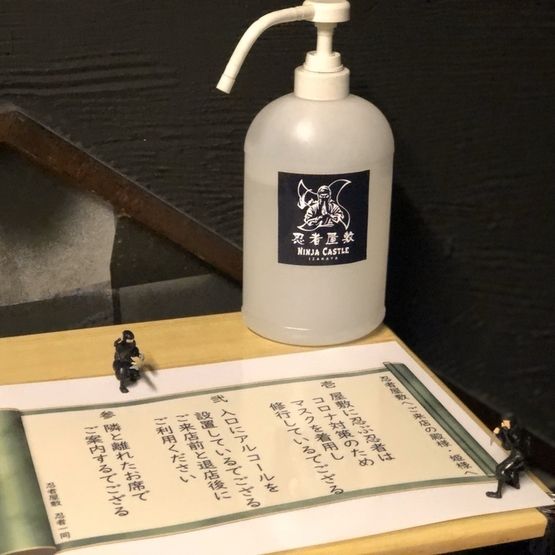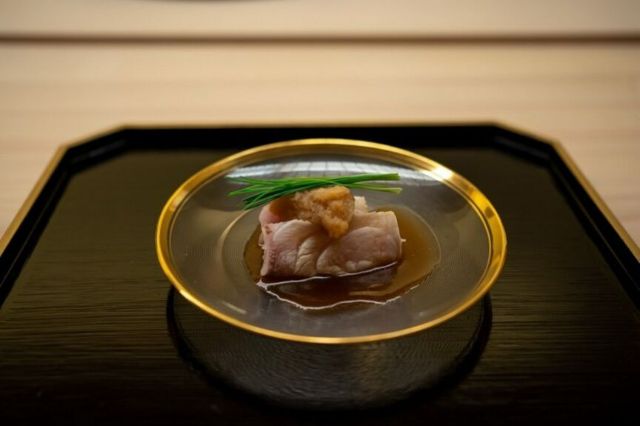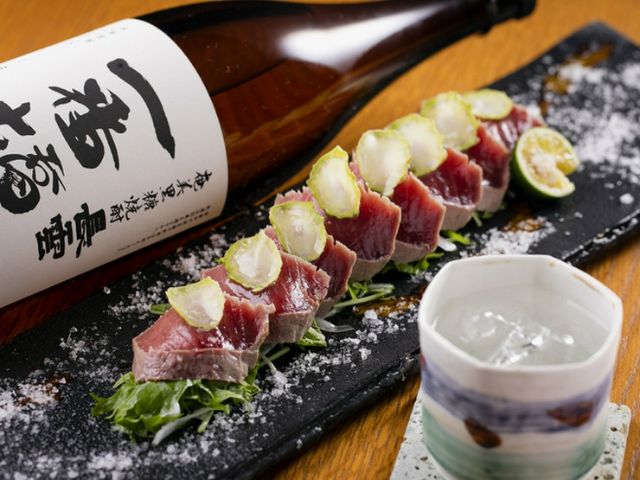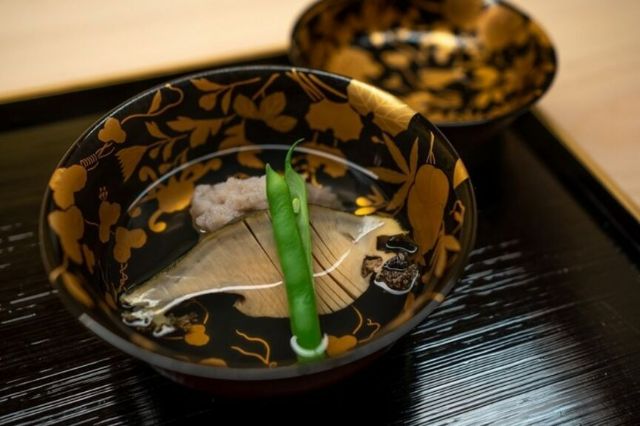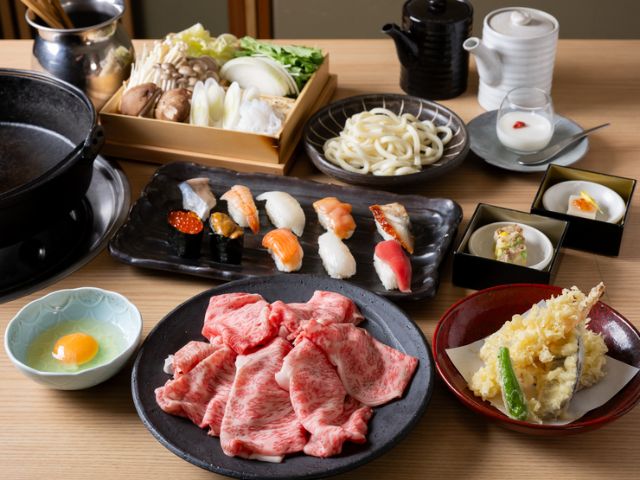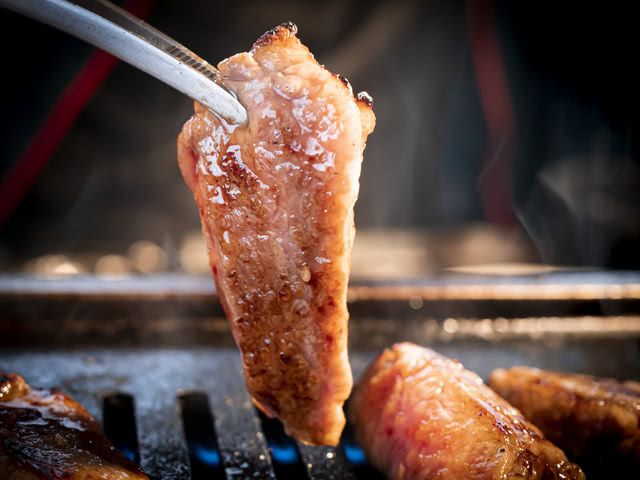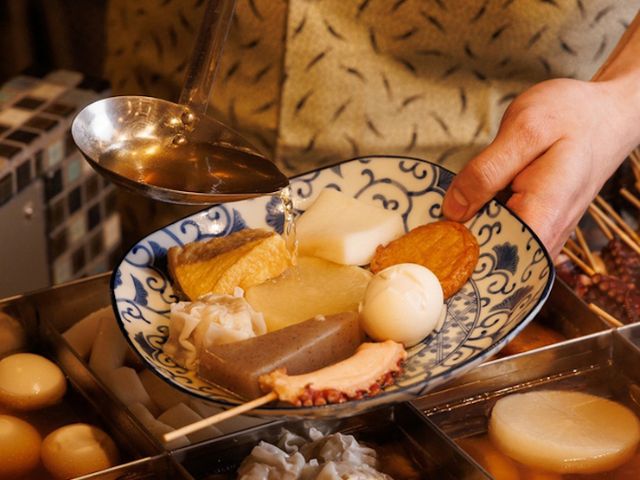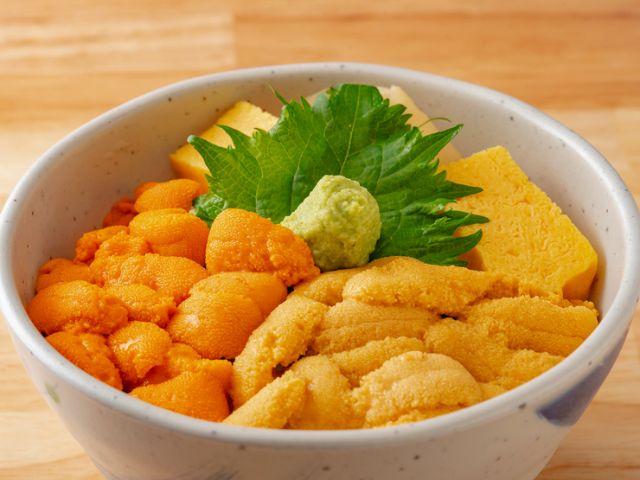[2023 Edition] What Is the Difference Between Kappo and Ryotei? A Look Into the Deep World of Japanese Cuisine
![[2023 Edition] What Is the Difference Between Kappo and Ryotei? A Look Into the Deep World of Japanese Cuisine](https://rimage.savorjapan.com/svj/image/discover_oishii_japan/1660/article_head.jpg?t=1730980571)
What Is the Difference Between Kappo and Ryotei?
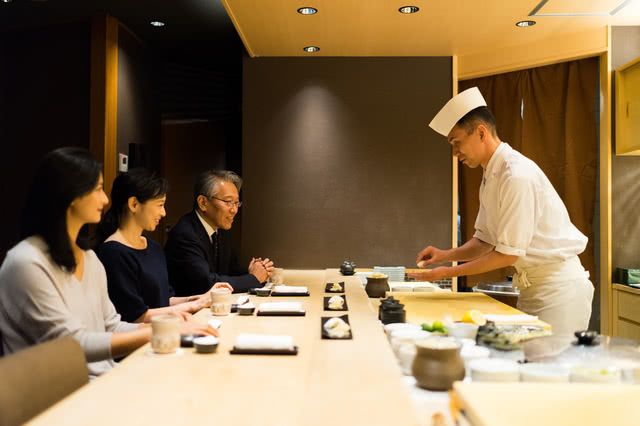
Before delving into the differences between these two types of restaurants, it would be best to first take a look at what kind of restaurants they are.
A kappo is a restaurant where you can enjoy traditional Japanese cuisine, freshly cooked by the chef, while sitting on a counter seat or at a table in the dining area. If a guest sits at the counter, they will get to see the chefs in action as they whip up delicious dishes. Kappo does not consist of just high-class restaurants but also places that are more accessible to the general public.
On the other hand, a ryotei is a restaurant where reservations are required as a rule. They are places where guests usually eat course-style meals in the comfort of a private room that has dedicated waiting staff. Guests can also invite a maiko or geisha to join their gathering. A geisha is a woman whose job it is to entertain and enliven a party by singing, dancing, playing the shamisen, or performing some other form of art. Meanwhile, a maiko is a woman training to become a geisha.
![[2023 Edition] What Is the Difference Between Kappo and Ryotei? A Look Into the Deep World of Japanese Cuisine](https://rimage.savorjapan.com/svj/image/discover_oishii_japan/1660/article_283049_w640z.jpg)
A ryotei is more expensive than a kappo, as evidenced by the fact that politicians and company executives are sometimes seen holding meetings in a ryotei. Some ryotei do not even accept first-time visitors and require a referral from a regular patron for you to get in.
In recent years, however, more and more ryotei have opened their doors to first-timers. So, if you find an interesting ryotei and want to go there, make sure to make a reservation. It will definitely make your visit to Japan even more memorable!
There is another type of cuisine that many find difficult to distinguish from kappo cuisine, and it is kaiseki ryori. Tracing its roots back to the tea ceremony, kaiseki ryori originally referred to a meal served before enjoying a cup of delicious tea.
Unlike kappo cuisine, where people order directly from the counter or some other seat that is close to the kitchen and the food is served one dish at a time, with kaiseki ryori, there is virtually a set order for serving dishes according to how they are cooked.
What to Wear and How to Behave When Dining in a Kappo or Ryotei
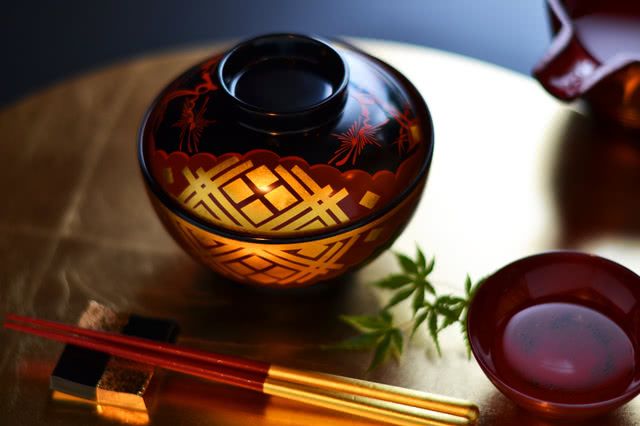
- Dress code
It is best to avoid flashy and brightly colored clothes, as well as outfits that show too much skin. Guests should dress as they would when dining in a fancy restaurant and wear something like slacks or an elegant dress.
There might be a chance of having to sit on tatami flooring, so it is advised not to go barefoot and wear socks or stockings.
In addition, it is recommended to avoid wearing overpowering perfume to fully enjoy the delicate aromas and tastes of the food.
- Dining etiquette
While most people enjoy talking and drinking while eating, please remember that most of the guests in high-class restaurants prefer going there for some peace and relaxation. With that in mind, guests should refrain from talking in a loud voice.
![[2023 Edition] What Is the Difference Between Kappo and Ryotei? A Look Into the Deep World of Japanese Cuisine](https://rimage.savorjapan.com/svj/image/discover_oishii_japan/1660/article_283051_w640z.jpg)
Ozashiki asobi is the collective term for the various forms of entertainment provided by a geisha, including dancing while a maiko or geisha plays the shamisen or sings, and a unique geisha game that is based on rock-paper-scissors. Inviting a maiko or geisha requires an additional fee called "ohanadai" (around 30,000 JPY to 50,000 JPY) on top of the cost of the meal.
Tourists in Japan wanting to try ozashiki asobi can do so without breaking the bank by booking a tour that will let them experience great food and the hospitality of a maiko or geisha at the same time and at a reasonable price. It should be easy to find a ryotei offering deals and packages for tourists in Kyoto and other places where there are many tourists.
A maiko or geisha will serve the guests but as they do not eat during the ozashiki, guests should remember not to offer them any food as well as behave in a polite manner.
Must-Try Kappo and Ryotei
Sushi Kappo Kinari (Kinshicho)
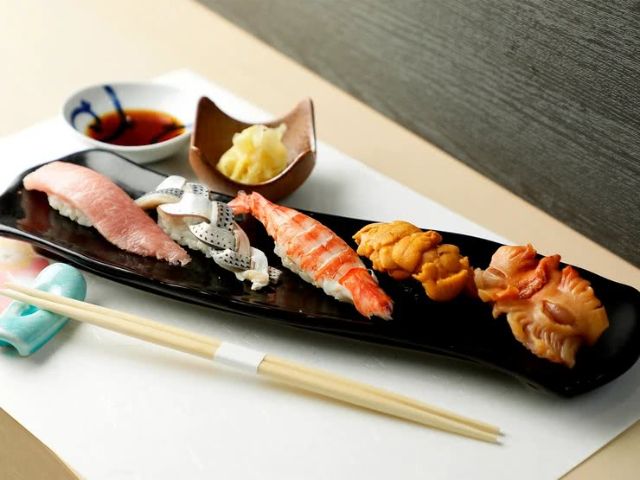
The restaurant's chef is particular about the origin of the fish he uses for his menu, so he goes to Toyosu Market every morning to buy the freshest ingredients he can find. In particular, the Chef's Choice Five Pieces of Nigirizushi and Tempura Assortment will let guests savor the best seafood and vegetables in season.
The ingredients and dishes incorporated in the courses vary depending on the season and availability of ingredients, so guests just have to prepare themselves to be surprised, as they will not know what they are getting until the day of their visit!
![[2023 Edition] What Is the Difference Between Kappo and Ryotei? A Look Into the Deep World of Japanese Cuisine](https://rimage.savorjapan.com/svj/image/discover_oishii_japan/1660/article_283053_w640z.jpg)
There are counter seats, table seating, and horigotatsu table seating available in this restaurant, with the latter being perfect for a more unique Japanese experience.
With horigotatsu table seating, there is a table over a hole in the floor where you can stretch out your legs while you sit on one of the cushions. Even those who are not used to kneeling on a cushion can relax, as they will be very comfortable in this kind of seating.
Sushi Kappo Kinari
Closed: Sunday
Average price: [Dinner] 10,000 JPY
Access: Approximately 5 minutes walk from the south exit of Kinshicho Station
Address: 1F, Sharumu Kinshicho, 2-6-14, Kotobashi, Sumida-ku, Tokyo Map
More Details Reservation
Ginza Kome Ryotei Hachidaime Gihe-e (Yurakucho)
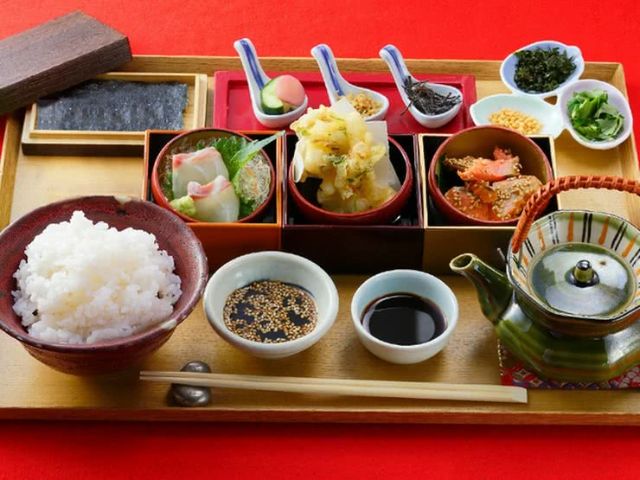
Here, the main star of the show is the rice, as the dishes are made to highlight the deliciousness of the rice. Guests can try the Sea Bream Chazuke Gozen (1,860 JPY), a course that will let them enjoy fresh sea bream with firm flesh in two different ways. First, eat the sea bream as sashimi with condiments and dipped in sesame soy sauce, and after that, place the sashimi on top of the bowl of rice and pour the specially provided broth into it.
![[2023 Edition] What Is the Difference Between Kappo and Ryotei? A Look Into the Deep World of Japanese Cuisine](https://rimage.savorjapan.com/svj/image/discover_oishii_japan/1660/article_283055_w640z.jpg)
There are private rooms inside the restaurant, so guests can savor all the tasty dishes they want without being self-conscious about the other people around them.
Ginza Rice Ryotei Hachidaime Gihei
Average price: [Dinner] 10,000 JPY / [Lunch] 1,900 JPY
Access: 1 minute walk from Exit B7 of Tokyo Metro's Ginza Station, or 5-minute walk from the Central Gate of Yurakucho Station on JR Yamanote Line and Keihin Tohoku Line
Address: Efflore Ginza, 5-4-15, Ginza, Chuo-ku, Tokyo Map
More Details
Disclaimer: All information is accurate at time of publication.
Thank you for reading our article.
Our goal is to take your culinary journey to the next level by helping you find the best restaurant. With SAVOR JAPAN, you can search and make reservations for
the Japanese Cuisine restaurants found in and around Tokyo and Ginza that fill your needs.
Discover more Japanese Cuisine restaurants by area
- Tokyo Area
- Near Tokyo
- Kyoto and Osaka Area
- Hokkaido Area
- Northern Honshu (Tohoku)
- Central Honshu (Chubu)
- Western Honshu (Chugoku)
- Shikoku
- Kyushu
- Okinawa and Ryukyu Islands
Discover more restaurants to eat Japanese Cuisine by area
Keywords
Related Articles
New Articles
Categories
Cuisine
- Bars (23)
-
Japanese Cuisine (676)
- Kaiseki (45)
- Nabe (19)
- Okonomiyaki (24)
- Shabu Shabu (36)
- Soba (17)
- Sushi (137)
- Tempura (18)
- Teppanyaki (46)
- Shojin Ryori (3)
- Tonkatsu (12)
- Kushiyaki (10)
- Yakitori (46)
- Sukiyaki (35)
- Japanese Cuisine (341)
- Oyster (2)
- Sashimi/ Seafood (19)
- Unagi (eel) (30)
- Motsu Nabe (offal hotpot) (6)
- Mizutaki (chicken hot pot) (3)
- Oden (8)
- Kaisendon (seafood bowl) (9)
- Udon (2)
- Taverns(Izakaya) Cuisine (125)
- Western Cuisine (42)
- Italian/French Cuisine (95)
- Yakiniku/Steak (225)
- Chinese Cuisine (26)
- Ramen (Noodles) Cuisine (26)
- Cafe/Sweets (60)
- Other Asian Cuisine (5)
- Global/International Cuisine (7)
- Alcohol (45)
- Other (11)
Area
- Shikoku (10)
- Kyoto and Osaka (345)
-
Tokyo (460)
- Tokyo (286)
- Ginza (44)
- Roppongi (22)
- Shibuya (26)
- Shinjuku (47)
- Asakusa (20)
- Ebisu (12)
- Tsukiji (10)
- Tokyo Landmarks (4)
- Ueno (24)
- Akihabara (9)
- Ikebukuro (12)
- Jiyugaoka, Denenchofu, Nakameguro (9)
- Shimokitazawa (4)
- Kichijoji (3)
- Tachikawa (1)
- Omotesando, Harajuku, Aoyama (18)
- Akabane (1)
- Kagurazaka (4)
- Akasaka (10)
- Odaiba (1)
- Tsukishima, Harumi, Toyosu (3)
- Near Tokyo (100)
- Okinawa and Ryukyu Islands (58)
- Hokkaido (124)
- Northern Honshu (Tohoku) (31)
- Central Honshu (Chubu) (144)
- Western Honshu (Chugoku) (32)
- Kyushu (92)
Archives
- December 2025(9)
- November 2025(4)
- October 2025(3)
- September 2025(6)
- August 2025(11)
- July 2025(19)
- June 2025(18)
- May 2025(34)
- April 2025(43)
- March 2025(30)
- February 2025(36)
- January 2025(26)
- December 2024(69)
- November 2024(31)
- October 2024(15)
- September 2024(39)
- August 2024(65)
- July 2024(31)
- June 2024(54)
- May 2024(61)
- April 2024(28)
- March 2024(31)
- February 2024(42)
- January 2024(32)
- December 2023(20)
- November 2023(5)
- October 2023(11)
- September 2023(7)
- August 2023(18)
- July 2023(8)
- June 2023(8)
- May 2023(18)
- April 2023(15)
- March 2023(1)
- January 2023(1)
- April 2022(2)
- March 2022(2)
- February 2022(1)
- January 2022(1)
- July 2021(1)
- March 2021(1)
- February 2021(1)
- December 2020(1)
- October 2020(1)
- September 2020(2)
- August 2020(10)
- July 2020(6)
- June 2020(9)
- May 2020(11)
- April 2020(8)
- March 2020(8)
- February 2020(13)
- January 2020(9)
- December 2019(24)
- November 2019(8)
- August 2019(14)
- July 2019(15)
- June 2019(18)
- May 2019(17)
- April 2019(16)
- March 2019(22)
- February 2019(22)
- January 2019(26)
- December 2018(34)
- November 2018(40)
- October 2018(32)
- September 2018(11)
- August 2018(8)
- July 2018(6)
- June 2018(9)
- May 2018(10)
- April 2018(21)
- March 2018(74)
- February 2018(39)
- January 2018(26)
- December 2017(60)
Keywords
- Omakase
- Accessible
- Affordable
- All-You-Can-Eat
- Amazing Scenery
- anime
- Art
- Autumn
- Awards
- Beer Gardens
- Breakfast
- Chef Recommendations
- Cherry Blossoms
- Chinese
- Close To Station
- Condiments
- Counter
- Coupon
- Crab
- Culture
- Dassai
- Dates
- delivery
- Early Summer
- Editor's Recommendation
- English Available
- Event
- Expo
- Fall Leaves
- Family-Friendly
- Famous Restaurant
- Famous Tourist Spot
- Fast Food
- festival
- fireworks
- Flower Farm
- Free Wi-Fi
- French
- Great Location
- Guide
- Hibachi
- hotpot
- How To
- hydrangea
- Hygiene
- Illumination
- Italian
- Izakaya
- Japanese
- Japanese alcohol
- jingisukan
- Kaiseki
- Kappo
- Kushiage
- Kushikatsu
- Kyoto
- Late-Night
- Lunch
- Manners
- matsusakagyu
- Michelin
- mizutaki
- Model Course
- monjayaki
- motsunabe
- Mt.Fuji
- Multilingual Menus
- Nabe
- Narita Airport
- New Year
- Ninja
- Noodle
- Oden
- Okonomiyaki
- omotenashi
- Onsen
- Osaka
- Osaka Station
- Photogenic Site
- pizza
- PR
- Private Room
- Ramen
- ranking
- Recipe
- Regional Cuisine
- Resort
- Rice Bowl Dish (Donburi)
- sacred places
- Sake
- Sakura
- Sashimi
- sea urchin
- Setouchi Area
- Shabu Shabu
- sightseeing
- Signature Dish
- Soba
- Solo Diners Welcomed
- Spicy Food
- Spring
- Steak
- Summer
- Sunflower
- Sushi
- takeout
- Teppanyaki
- Terrace Seating
- Tokyo
- Tokyo Experiences
- Tokyo Skytree
- Tokyo Tower
- unagi
- UNESCO
- Vegan
- Vegetarian
- Wagyu
- What Popular Gourmet Sites Recommend
- Whisky
- Wine Bar
- Winter
- Wisteria
- Workshop
- World Heritage Site
- World Writers
- Yakiniku
- Yoshoku
- Yuba
- Zen
Discover Restaurants By Area
-

Tokyo Area
Japan's largest city, Tokyo, is the center of culinary culture in Japan. Countless Tokyo restaurants serve every kind of food imaginable and the Toyosu fish market keeps restaurants stocked with the nation's finest fish.
-

Near Tokyo
Coastal areas, mountains and valleys surrounding Tokyo are bursting with tourist destinations, such as hot springs and ski slopes, where many unique foods are only available locally.
-

Kyoto and Osaka Area
The cities of Kyoto and Osaka, together with their surrounding areas, have greatly influenced Japan's culinary culture since the 7th Century. The region is renowned for its entertainment, Kobe beef, and wide-ranging traditional dishes.
-

Hokkaido Area
The island of Hokkaido is home to wide-ranging produce of the finest quality, such as rice, meat, vegetables, fish and fruit. Popular dishes from Hokkaido include robatayaki (food slowly roasted on skewers) and Sapporo miso ramen.
-

Northern Honshu (Tohoku)
The northern end of Japan's main island, Honshu, is renowned for its seasonal fruit and vegetables, nation-leading harvest of fish (especially tuna from Ohma), and delicious beef from Yonezawa, Sendai and Yamagata.
-

Central Honshu (Chubu)
Chubu is in the center of Japan's main island, Honshu, and its culinary culture reflects its position between Japan's western and eastern halves. Delicious Hida beef, world-famous Mount Fuji and many acclaimed sake breweries are in Chubu.
-

Western Honshu (Chugoku)
Chugoku, on the southwest of Japan's main island, is rich with diverse produce. Many of its products are praised as Japan's best, including Matsuba crabs from Tottori and oysters from Hiroshima. Its pears and muscats are also top grade.
-

Shikoku
The mild climate of Shikoku is ideal for growing citrus fruit such as sudachi. Shikoku is also famous for Sanuki udon noodles, huge yields of tiger prawn from Ehime Prefecture and the best torafugu (tiger globefish) in the country.
-

Kyushu
Western culture was first introduced to Japan through Kyushu, Japan's third largest island, where the influence of Portuguese and other western cuisine influenced the creation of a colorful culinary tradition.
-

Okinawa and Ryukyu Islands
Okinawa, Japan’s southernmost prefecture, is a treasure trove of distinctive dishes and drinks that have become popular throughout Japan, including Okinawa soba, unique sushi toppings and Awamori distilled liquor.
